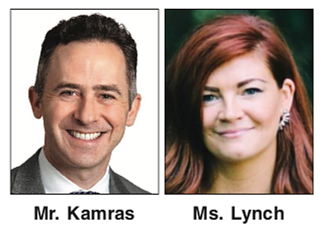Council members link truancy to increased violence involving city youths
Jeremy M. Lazarus | 3/16/2023, 6 p.m.
Richmond Public Schools needs to do more to ensure students are in class rather than roaming the streets, according to concerned members of City Council.
The council members see a correlation between the rise in violence involving youths ages 12 to 18 and the chronic absenteeism that has become worse since the pandemic.
In a January report, the school system stated that one in four students has already missed 10 or more days of the first semester, the definition of chronic absenteeism.
That’s far higher than RPS’ stated goal of reducing chronic absenteeism to one in 11 students.
Before the pandemic struck in 2020, 15 to 20 percent of students were chronically absent, still well above the goal.
The issue of truancy and schools came to the forefront during a budget session Monday and came in the wake of the shooting of four RPS students away from school, with three left wounded and a fourth dead after he was accidentally shot while filming a social media video about having a weapon.
Among the council members expressing concern was Fifth District Councilwoman Stephanie A. Lynch, chair of the Education and Human Services Committee that deals with educational issues.
Ms. Lynch said one issue of concern is that RPS shed its truancy officers in 2019 and has not replaced them, making it more difficult, in her view, to round up children who are playing hooky.
“There were substantial programmatic changes made several years ago,” Ms. Lynch said. She said there is a need for discussion with RPS to determine if “our current truancy program is working and what could be done better.”
Eighth District Councilwoman Reva M. Trammell also noted that she sees many school-age children out and about during the day and not in school. “We can’t tell them to go to school,” she said.
Third District Councilwoman Ann-Frances Lambert also saw the number of truant children who are not in the classroom as a concern that needs more attention.
A former social worker herself, Ms. Lynch said that she also wants further discussion with RPS about the School Board’s early February decision to remove absenteeism from school social workers’ tasks, and asked whether more involvement from professionals who can work with families would be better.
She also expressed concern that RPS might not be effectively engaging nonprofits and other organizations.
“There are still programs that struggle to get funding to use space or gain access to RPS facilities,” she stated, noting that Parks and Recreation had to work with RPS to create a memorandum of understanding in order to get on a number of school campuses to offer after-school programs.
“I think there is an undertone of separation that RPS maintains,” Ms. Lynch stated, expressing her belief that “we can work smarter together or work harder apart.”
RPS has not responded to a Free Press query about the concerns that were raised.
Superintendent Jason Kamras also has not responded to the question of whether the school system has stopped holding parents accountable for failing to comply with state law to ensure their children are in school.
In a presentation to the School Board about work being done to improve attendance, Dr. Shadae Harris, RPS’ chief engagement officer, did not provide any data in her presentation on the number of conferences held with parents with chronically absent children.
Fourth District School Board member Jonathan Young said his understanding is that the school system has dropped any punitive consequences for families whose children do not attend. “It’s all carrot and no stick,” he said, and has proven a “colossal failure.”
The school district also plans to work more with the students and their families to deter them from that path.
Dr. Harris told the board that her team is developing a data-driven approach that relies on substantial engagement with and support for families.
“We want to continue with practices where we are seeing impact and in co- creating support plans with families,” she said. “We want to make sure the quality of these plans is top notch.”






